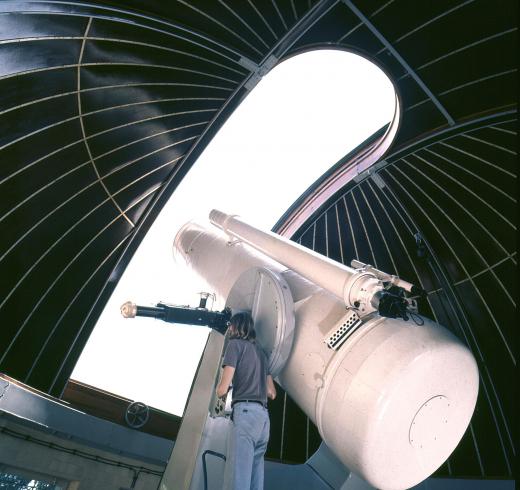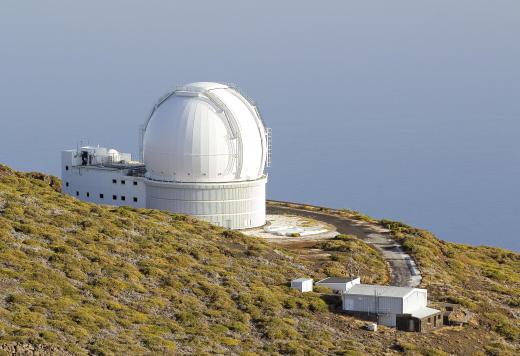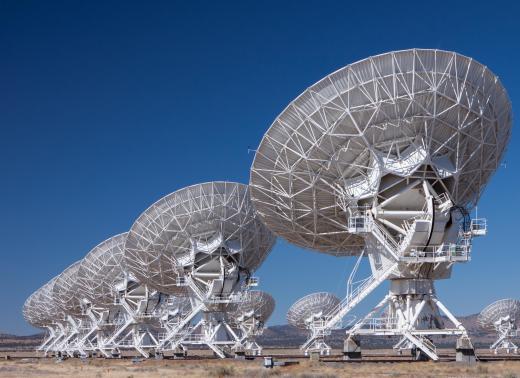What Is an Astronomical Observatory?
 Mary McMahon
Mary McMahon
An astronomical observatory is a facility where personnel can observe physical phenomena in space with the use of telescope equipment. Such facilities can range from amateur observatories with a single optical telescope to large complexes with radio, x-ray, and other telescope types that can collect different kinds of observations. Observatory time can be critical for some kinds of research in astrophysics, astronomy, and related fields.
The best astronomical observatories are located in conditions conducive to observations. Many of these locations have a very high altitude, to help observers get away from smog, light pollution, and other issues that may make it difficult to see. Good weather conditions are also important for some types of observations, as cloud cover can make it difficult to collect data. The astronomical observatory can have a variety of equipment, including programmable telescopes that researchers can train on specific targets to collect observations and the capacity to launch balloons to gather additional material.

At a research observatory, competition to use the telescopes can be fierce and may involve researchers from all over the world working on different kinds of projects. Personnel need to schedule telescope time and delegate appropriate team members to assist researchers with the operation of the equipment. If poor conditions make it hard to collect data, a team may need to apply for a new slot, because the observatory may not allow researchers to run over into times scheduled for other teams, as this could create a scheduling snarl.

Levels of resolution and detail available at an astronomical observatory can vary, as can the types of observations people can make. Technical data and specifications are available for people who want to schedule telescope time, so they know what is available and whether the facility will suit their needs. It may be necessary to request a slot with the sponsorship of an organization like an academic or research institution.

The astronomical observatory may maintain a database of observations, scheduled activities, and related matters. Researchers may also offer tours to the public in some cases, to allow people with an interest in the field to learn more about the facility and the equipment. Such tours are often listed on the website for the observatory and may be advertised so members of the community know when they can visit the astronomical observatory. This may be part of an outreach mandate on the part of the parent organization to keep the public interested in science and research.
AS FEATURED ON:
AS FEATURED ON:















Discuss this Article
Post your comments